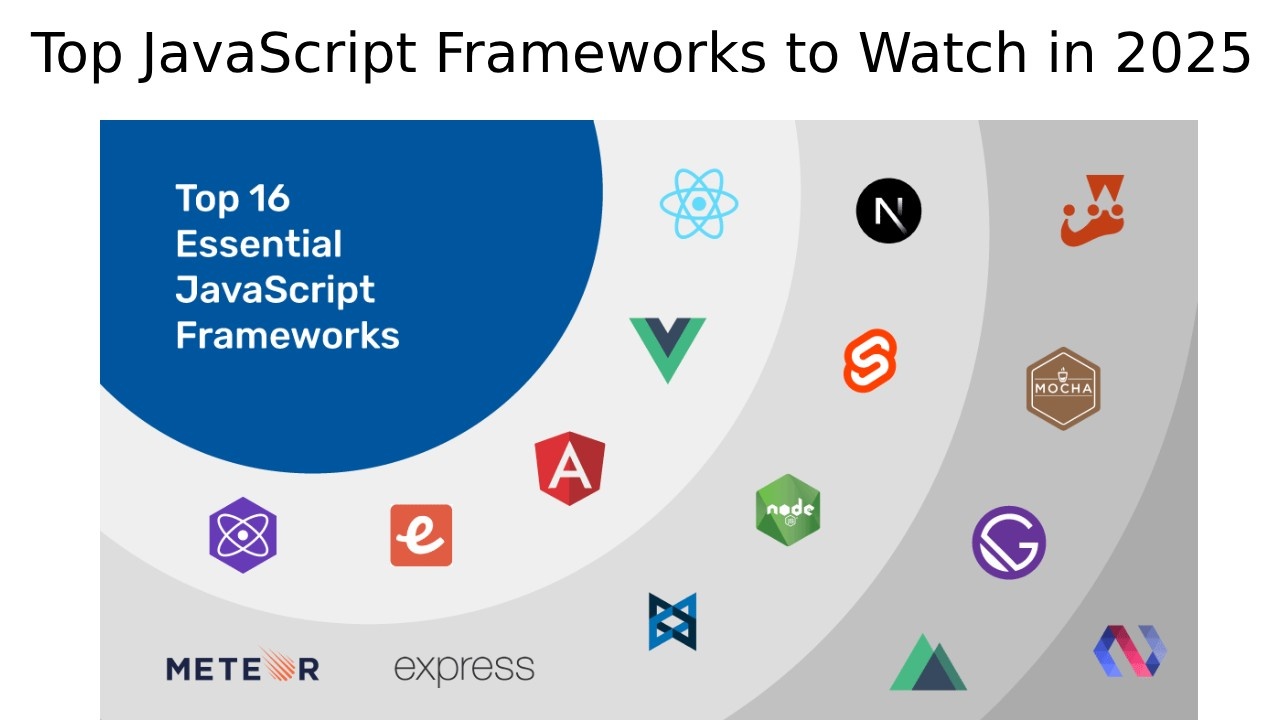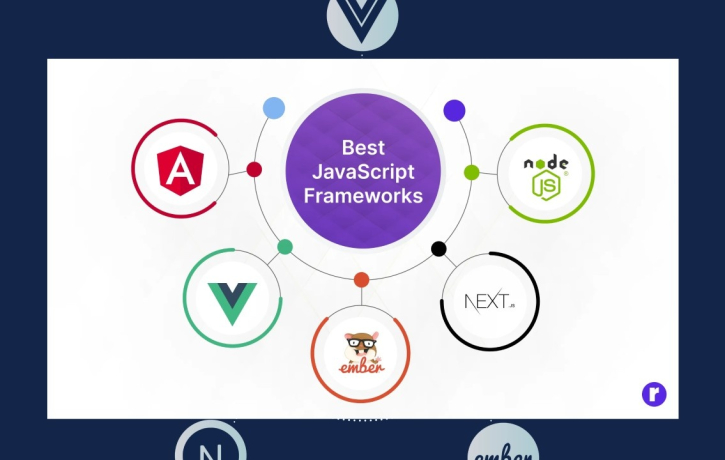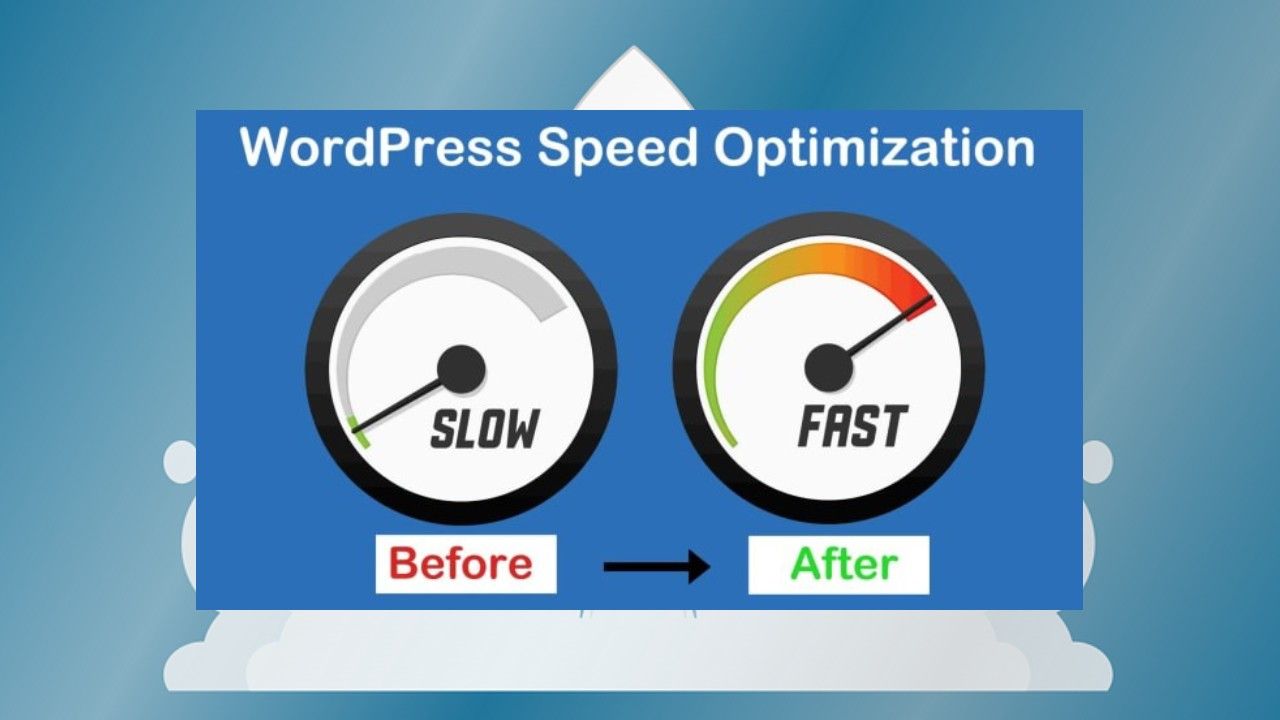
Must-Know Top JavaScript Frameworks to Watch in 2025
Top JavaScript Frameworks to Watch in 2025 is one of the most versatile and essential languages in modern web development, driving everything from interactive websites to large-scale applications. As the need for faster, more efficient, and scalable web solutions increases, JavaScript frameworks are adapting to meet these demands. Looking ahead to 2025, several frameworks are emerging as leaders in shaping the future of JavaScript development. Here’s a look at the top JavaScript frameworks to keep an eye on in 2025.
1. React
React continues to be one of the most popular JavaScript libraries for building user interfaces. Developed and maintained by Facebook, React’s declarative approach and component-based architecture have transformed front-end development. Its extensive ecosystem, which includes tools like React Router for routing and Redux for state management, ensures that React remains a preferred choice for developers around the globe.
React Server Components: The upcoming advancements in server-side rendering for React will enhance performance and create smoother user experiences.
React 18 and Beyond: With the introduction of concurrent rendering features in React 18, we can expect further enhancements in performance and user interaction management.
Ecosystem Growth: React’s extensive ecosystem and vibrant developer community ensure that it will continue to evolve and remain relevant.
2. Vue.js
Vue.js has been steadily rising in popularity thanks to its simplicity and flexibility. Developed by Evan You, Vue’s progressive framework allows developers to adopt its features gradually, making it easy to integrate with other technologies. The release of Vue 3, which utilizes the Composition API, brings improved performance, smaller bundle sizes, and enhanced TypeScript support, solidifying Vue’s position as a leading choice for modern web development.
Composition API: Vue 3’s Composition API gives developers enhanced flexibility and control over how they organize their code, making it easier to manage complex applications.
Improved Developer Tools: Vue’s seamless integration with tools like Vue DevTools and enhanced TypeScript support makes it a top choice for those prioritizing developer experience.
Growth of Vue 3: The increasing adoption of Vue 3 in large-scale applications ensures it remains relevant in the years ahead.
3. Svelte
Svelte is becoming a popular alternative to React, Vue, and Angular. Unlike traditional frameworks, Svelte does much of the heavy lifting at compile time instead of relying on the browser to run JavaScript. This results in quicker load times and smaller bundle sizes. Additionally, its straightforward and intuitive syntax makes it easy for developers to learn quickly.
Svelte eliminates the need for a virtual DOM by compiling directly optimized JavaScript code, which enhances performance. Its ecosystem is expanding rapidly, with tools like SvelteKit that facilitate the development of full-stack applications, making it an increasingly attractive option for developers. The framework’s straightforwardness and user-friendliness make it suitable for creating both small and large applications with minimal overhead.
4. Angular
Angular, created and maintained by Google, stands as one of the oldest and most robust front-end frameworks in the JavaScript landscape. Renowned for its structured approach, Angular is a comprehensive framework that aids developers in constructing scalable and maintainable web applications. While its steep learning curve has drawn some criticism, Angular’s extensive tooling and features such as RxJS, Dependency Injection, and two-way data binding have solidified its reputation in the enterprise development arena.
Angular 15 & Standalone Components: The latest versions of Angular are designed to enhance the developer experience, notably by introducing standalone components that simplify usage without the need for NgModules.
Comprehensive Features: Angular provides a complete toolkit for developing enterprise-grade applications, with built-in functionalities ranging from HTTP services to form validation.
Enterprise Adoption: Angular continues to be the preferred framework for large, complex applications, particularly in corporate settings where scalability and maintainability are essential.
5. Next.js
Next.js, which is built on React, has rapidly established itself as the leading framework for server-side rendering (SSR) and static site generation (SSG). Its simplicity and robust tooling enable developers to create fast, SEO-friendly websites and applications with ease. With features like automatic code splitting, image optimization, and API routes, Next.js stands out as a powerful option for modern web development.
Server-Side Rendering (SSR) and Static Site Generation (SSG): Next.js is particularly effective at producing SEO-friendly, fast-loading web applications, which is vital for businesses looking to enhance their search rankings.
React Server Components Integration: The addition of React Server Components will facilitate the development of dynamic, high-performance applications, improving scalability and user experience.
Ease of Use: Developers value Next.js for its zero-configuration setup and smooth developer experience, making it suitable for projects of any size.
6. Remix
Remix is an emerging framework that is rapidly gaining traction among developers. Built on React, Remix aims to enhance the user experience by leveraging modern web standards such as server-side rendering (SSR) and progressive enhancement. It provides a more effective approach to data loading, routing, and state management by harnessing the capabilities of the web platform itself.
Optimized Performance: Remix is designed to improve performance by utilizing the native browser cache and refining data-fetching techniques, resulting in quicker applications.
Built-in Data Management: Unlike many other frameworks that depend on external libraries for data fetching, Remix features its data management system, which promotes cleaner and more maintainable code.
Developer-Focused: With its emphasis on full-stack development and a ready-to-use experience that requires minimal configuration, Remix is particularly appealing to developers seeking a highly efficient working environment.
7. Solid.js
Solid.js is a framework that takes a fresh approach to building user interfaces. It features a high-performance, fine-grained reactive programming model, which means it automatically tracks dependencies and updates only the necessary parts of the DOM. This approach eliminates the need for a virtual DOM, leading to highly efficient web applications.
Zero Virtual DOM: Solid.js stands out for its exceptional performance by eliminating the virtual DOM and directly updating the real DOM when needed.
Fine-Grained Reactivity: Solid’s reactivity model enables more predictable updates, creating a highly responsive user experience.
Growing Popularity: Despite being relatively new, Solid.js has attracted attention for its innovative take on reactivity and performance, making it a framework to keep an eye on in 2025.
8. Astro
Astro has quickly become a popular “meta-framework” that enables developers to create modern websites by utilizing the best features of various frameworks. With Astro, you can seamlessly integrate React, Vue, Svelte, and more within a single project, making it an excellent choice for building highly optimized static websites that take advantage of multiple technologies without sacrificing performance.
Top JavaScript Frameworks to Watch in 2025 By default, Astro delivers sites with no JavaScript, positioning it as one of the fastest frameworks for creating static websites.
Multi-Framework Compatibility: The ability to combine different frameworks without added overhead provides developers with the flexibility to select the best tools for their unique requirements.
Focus on Content Delivery: Astro enhances website speed by emphasizing static content delivery, making it an ideal solution for blogs, marketing sites, and landing pages.
Top JavaScript Frameworks to Watch in 2025 are evolving, providing developers with increasingly powerful and efficient tools for creating modern web applications. While React and Angular remain dominant in enterprise settings, newer frameworks like Svelte, Remix, and Astro are gaining attention for their impressive performance and ease of use. Keeping up with these advancements and adopting new technologies will be essential for developing faster, more scalable, and user-friendly applications in the future.






